#scottish witchcraft
Text
The Scottish Folklore of Using Juniper Smoke to Sain
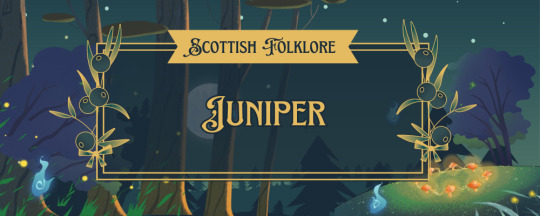
Within historical Scottish folklore, juniper (also called: mountain yew, Iubhar-beinne, or aiteal) is often mentioned as being protective against supernatural forces, which is why it is one of many ways someone might sain(cleans or protect) people, places, or things. However, when gathering juniper, you weren’t supposed to take a clipping, but instead pull up the whole plant. For obvious environmental reasons, I have to strongly advise against murdering a slow-growing (and endangered) protected plant.
“This plant is a protection by sea and land, and no house in which it is will take fire. It must be pulled by the roots, with its branches made into four bunches, and taken between the five fingers…-“
“The History of Witchcraft in Europe” by Various Authors
You would want to smoke to drift over whatever it is you are trying to sain, so where you burnt them was very important. As well as that, on certain festival days, sains were thought to be more powerful(such as a quarter day), so people would be very likely to partake in juniper saining on those days.
"A fire was kindled in each byre on Christmas morning, and in parts of the country the byres were purified by burning juniper in them."
“Notes on The Folk-Lore of the North-East of Scotland” by Walter Gregor (1881)
Since the cleansing and protective effects were believed to fade, it was often redone several times throughout the year.
While likely not great for people with raspatory problems, smoke does have some science-backed benefits. The oil in juniper is antibacterial and antifungal, while the smoke itself is antibacterial, can help kill/dry out mold, can help keep away insects(including harmful ones, such as ticks, and house-munching ones, such as carpenter ants). This could be part of the reason that smoke finds it’s way into cleansing rituals around the world. Despite these benefits, it is harmful to breathe in any kind of smoke, so please keep that in mind.
One final (but less mentioned) use for juniper was boiling the juniper, and using the water to sprinkle on cattle.
“When a contagious disease enters among cattle, the fire is extinguished in some villages round; then they force fire with a wheel, or by rubbing a piece of dry wood upon another, and there with burn juniper in the stalls of the cattle, that the smoke may purify the air about them; they likewise boil juniper in water, which they sprinkle upon the cattle this done, the fires in the houses are rekindled from the forced fire.”“
Observations on the Popular Antiquities of Great Britain: Chiefly Illustrating the Origin of Our Vulgar and Provincial Customs, Ceremonies, and Superstitions, Volume 1.” by John Brand
#juniper#lubhar-beinne#aiteal#juniper saining#juniper sain#saining#sian#sain#sianing#juniper smoke#scottish folklore#scottish mythology#folklore#scottish witchcraft#Folkmagic
59 notes
·
View notes
Text
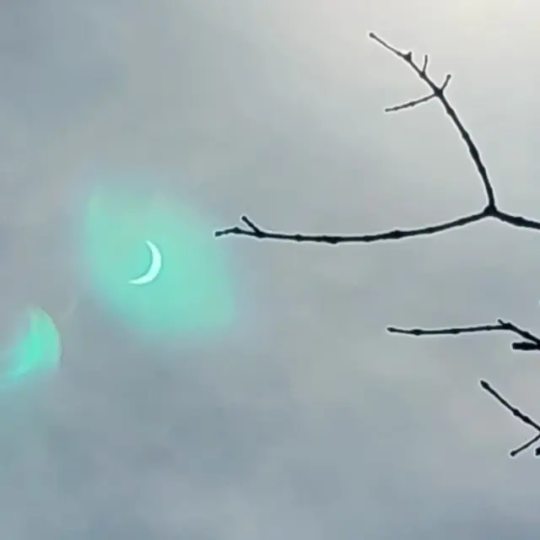
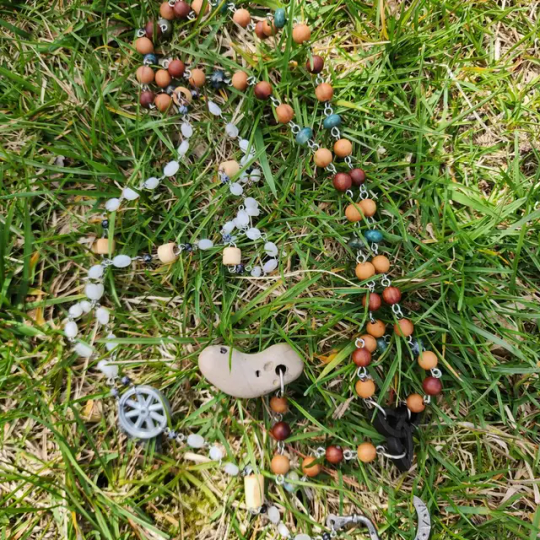

Spent the eclipse drawing cards and spending time with my deities. The new Winter Mother prayer beads from @lailoken go beautifully with the custom Celtic Faith beads I had commissioned from Lucien about a year and a half ago!
#folk magic#eclipse#solar eclipse#prayer beads#paganism#celtic paganism#scottish witchcraft#oracle cards#tarot deck
10 notes
·
View notes
Text
Scottish witches stealing peoples milk on Hogmanay
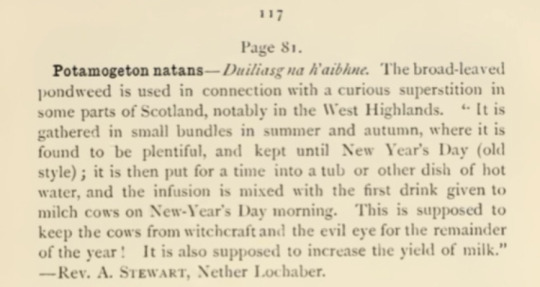
Broad-leaved pondweed to keep the cows from witchcraft
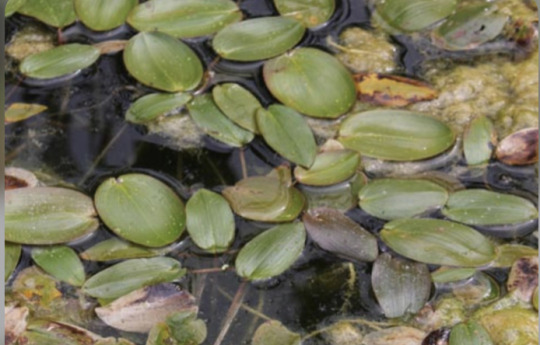
Theres a TG4 documentary called ”An Diabhal Inti” which actually discusses how the witchcraft concept as we know it was brought over from Scotland to Ireland
Before this we mainly had a history of paganism. But witch trials became a relatively new concept. (Its actually quite a cool documentary with Irish and Scottish experts for anyone interested in learning irish who wanna brush up on their Irish would enjoy it)
Another description of Scottish witchcraft

*this book is from the 18th century so it used the word “celtic races” this is an outdated term. The celtic race is not a thing!!!
Yarrow
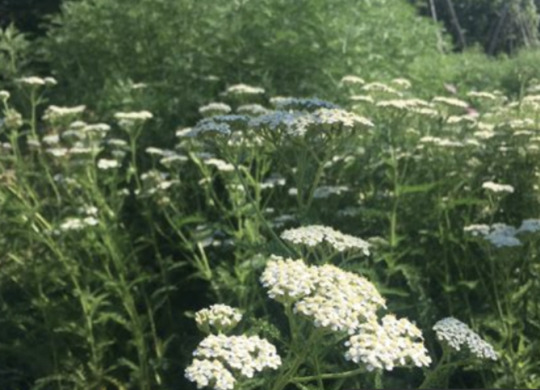
Another account except this time the herb that was used to steal other peoples milk
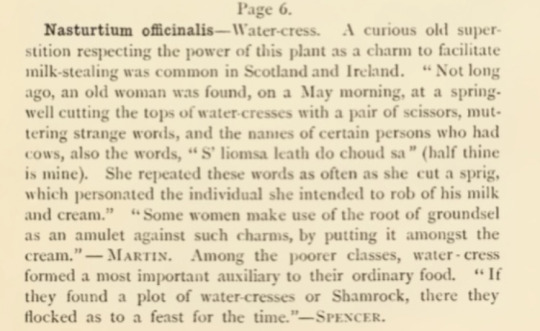
Water cress

so in conclusion
pondweed was used to protect your milk from being stolen
watercress was used to take peoples milk
yarrow gives you a mystic dream that tells you who your true love will be
#Gaelic#scots gaelic#irish#scottish#witch#scotland#scottish witch#Hogmanay#Burns night#Scottish witchcraft#Witchy#witchcore#green witch#plants#history#scottish history#gaeilge#dríaocht#paganism
84 notes
·
View notes
Text
Is anybody out there a practicing Scottish pagan and/or witch? Are there any special Scottish deities that people don't talk about? I know about Scathach, Nicneven, and The Cailleach, but Google just keeps throwing Irish deities at me. And while I'm willing to believe that there is some overlap between the two cultures, I refuse to believe they just share the same gods. Ireland and Wales have different deities, Wales and Brittany had different deities. There's a bunch of water between Ireland and Scotland, I think there'd be a little more differentiation between the two cultures' gods than what direction the accent is pointing in their names.
21 notes
·
View notes
Text
I've never had contact with my father's side of the family before (for good reason) and I've been feeling a strong pull towards Scottish folk magic for a while now.
So it turns out I'm half Scottish. Like, full 50%. The largest ~percentage~ I have (European mutt lmao).
Alright, I guess I'm gonna be doing some research (if anyone has any books they can point me towards I would be very thankful).
10 notes
·
View notes
Text
A spoken charm from the outer hebrides,
I make to thee a charm of Mary
The most perfect charm that is in the world
Against small eye, against large eye.
Against the eye of swift voracious women
Against the eye of swift rapacious women
Against the eye of swift sluttish women.
Protection against the evil eye.
Source:
Folklore Of The Scottish Highlands by Anne Ross.
2 notes
·
View notes
Text
Let's continue with Scottish themes for a few days🏴
WITCH TRIALS HISTORY - Paisley

🐑Paisley town located in 11 km west of Glasgow. It is known for its shawls, unfortunately the famous museum was under repair during my visit, so I missed it and only passed the town. The Paisley witches, also known as the Bargarran witches, or the Renfrewshire Witches, trials happened in 1697.
CLICK THE Video
🤮According to Levack (2008) In this case, the 11-year-old girl Christian Shaw began 1696 to experience fits and various bodily contortions and sensory disturbances. At times her head twisted around, as if her neck bone had been dissolved. Her stomach ‘swelled and at the times she had difficulty breathing and felt as if she was being choked. Witnesses claimed that she was even carried through the house in the air🛌

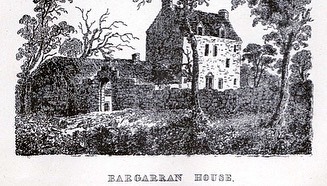
⚖️Christian accused maid Katherine Campbell and old widow Agnes Nasmith. Later she added others to the list. This affair was referred to the privy council, which commissioned Lord Blantyre and 8 other members to interrogate and imprison persons suspected of witchcraft and to examine witnesses. This led to the confessions of Elizabeth Anderson (aged 17), James Lindsay (14), and Thomas Lindsay (a minor) and the naming of accomplices who had allegedly gathered with the Devil. 24 persons were indicted for witchcraft, seven of these persons went to trial. (Levack 2008, 168.)
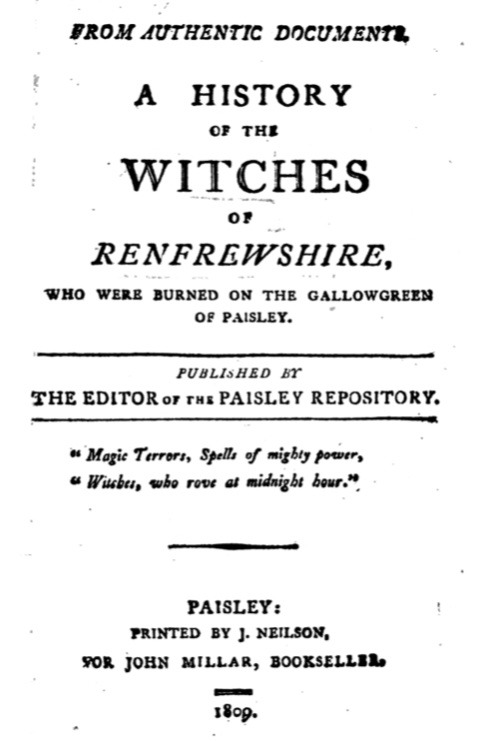
Four 👩🦳& two 👱♂️ were strangled or hanged on the Gallow Green and then had their bodies burned. Their remains were buried at Maxwellton Cross at a site marked by a 🧲and circle of cobbled stones.One👱♂️did a suicide in the prison and it was claimed that he was strangled by the Devil (Neilson 1809).
This drawing is probably from Spain, because the condemned is wearing a sanbenito, a penitential hat decorated with flames worn by heretics at the Inquisition’s behest. I think in Scotland the strangulation was done a bit differently, but it is hard to find any evidence.

Paisley Development Trust has unveiled a fresh tribute at the site in the shape of a stainless steel and bronze horseshoe piece sculpted by the town’s most famous craftsman, S.Stoddard. (Dailyrecord.co.uk 2008).

Christian and her mother smuggled from the Netherlands pieces of a Spinning Jenny back to Paisley under their skirts and set up Bargarran Threads, which became Bargarran Mills, which was then bought out by the Coats family. So the Paisley's industrial heritage was founded by those women. (BBC News, Williams 2012)🧶

#bargarran witches#paisley#scotland#scottish witchcraft#witch#history#execution#witches#great britain#witch trials#possession#demonic#travel
3 notes
·
View notes
Text
A little something traditional for the Samhain season.
The tradition teaches, when using herbs the timing associated with gathering them is important to enhance their effects.
For an operation that empowers growth new opportunities the herb should be gathered at the beginning of the growing season, under a new moon and only new growth leaves etc should be taken.
For operations that involve prosperity and increase the herb should be gathered between the new moon and the full moon when the herb is seeding.
For operations to harm others the herbs should be gathered when the moon is waining and the herbs are dying or shedding leaves( autumn/winter).
As always the operation should be timed to enhance ones needs.



#traditional witchcraft#traditional craft#witchcraft#folkmagic#scottish craft#charms#scottish witchcraft#herbal#herbal correspondences
2 notes
·
View notes
Text
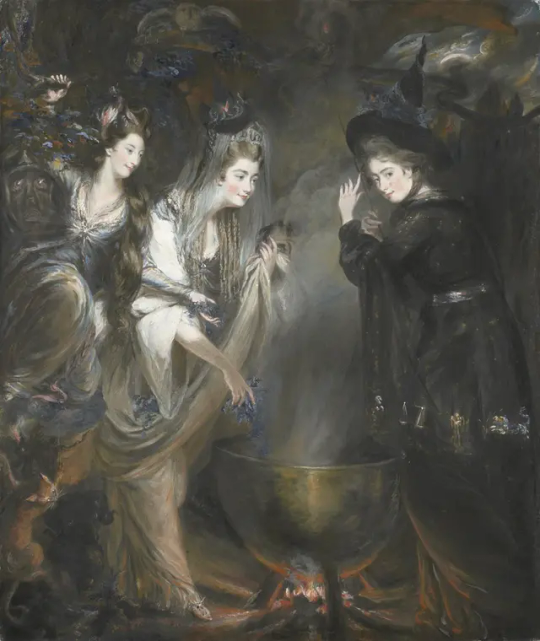
Daniel Gardner (c.1750-1805) - The Three Witches from Macbeth, 1775
portraits of Elizabeth Lamb, Viscountess Melbourne; Georgiana, Duchess of Devonshire; Anne Seymour Damer
#daniel gardner#the three witches from macbeth#william shakespere#macbeth#“the scottish play”#witch#witches#witchcraft#portraits#art#gothic romanticism#painting
157 notes
·
View notes
Text
How To Get Free Books On Folklore
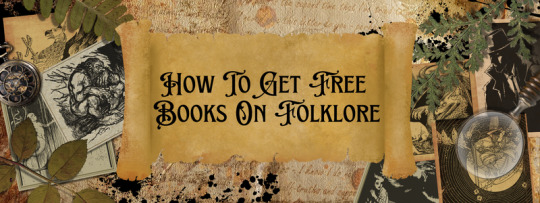
I do not believe in gatekeeping knowledge, so this post will be sharing how I get all my folklore books for free, legally.
To explain, when a book gets over a certain age and the copyright is not upkept, it falls under “public domain.” When that happens, many different websites will provide those books as a free download.
This is not restricted to one type of book, either. You can grab anything from Sherlock Holmes to history books, to folklore, and more.
If you are looking for a specific book, you may have to check more than one source, so I suggest bookmarking more than one website.
Example Websites:
Internet Archive
Project Gutenberg
Google Books
Open Library
Electric Scotland (Scottish books)
Sacred Texts
National Library of Scotland: Ossain Collection
Forgotten Books
Hathitrust
For me when I download a book, I then upload them to my Google library so that I can use the search functions as well as bring up the books anywhere, but a popular PC option isCalibre.
If you are interested in Scotland-specific folklore, I do have some suggestions of books you can start with.
Scottish Folklore Books:
(link) A Dictionary of Fairies: Hobgoblins, Brownies, Bogies, and Other Supernatural Creatures by Katharine Briggs (1976)
(link) Folklore of Scottish Lochs and Springs by James M. Mackinlay (1893)
(link) Superstitions of the Highlands & Islands of Scotland by John Gregorson Campbell (1900)
(link) The Peat-Fire Flame: Folk-Tales and Traditions of the Highlands and Islands by Alasdair Alpin MacGregor (1937)
(link) Notes on Folk-Lore of the North-East of Scotland by Walter Gregor, M.A. (1881)
(link) The Fairy-Faith in Celtic Countries by W.Y. Evans-Wentz (1911)
(link) Witchcraft and Superstitious Record in the South-Western District of Scotland by J. Maxwell Wood (1911)
(link) Witchcraft & Second Sight in the Highlands & Islands of Scotland by John Gregorson Campbell (1902)
(link) Folklore of Scottish Lochs and Springs by James M. Mackinlay (1893)
(link) Folk-Lore From The West of Ross-Shire by C.M. Robertson (1908)
(link) The Fairy Mythology / Illustrative of the Romance and Superstition of Various Countries by Thomas Keightley (1850)
(link) Popular Tales of the West Highlands by John Francis Campbell (1862)
(link) Scottish Fairy and Folk Tales by Sir George Douglas
(link) The Scottish Fairy Book By Elizabeth W. Grierson (1918)
(link)
(link) Popular Superstitions of the Highlands By W Grant Stewart (1823)
#folklore#mythology#myths#lore#scottish folklore#ScottishFolklore#scottish mythology#history#witchcraft#folk magic#folkmagic#paganism#scottish paganism#ResearchResources
3K notes
·
View notes
Text

By Rowan Berry and Red Thread,
I put all Evil to its speed...
106 notes
·
View notes
Text

On November 8th 1576 Elizabeth Bessie Dunlop was found guilty of Witchcraft and sentenced to be burnt at the stake.
Today, she would have been seen as a wise woman, a psychic or a medium. But when Bessie Dunlop went on trial in Edinburgh in 1576, she was quickly branded “The Witch of Dalry”, tortured, then burned at the stake.
For years, she had been helping locals with potions, predictions and cures for cattle. But she was an early victim of the Scottish witch purges, when the saying: “Thou shalt not suffer a witch to live” was taken literally.
Records of Bessie’s trial survived through the centuries and, perhaps because of that, she remains one of Scotland’s most famous “witches”. Plays and books have been written about her over the years.
Most recent accounts portray Bessie as a woman who helped locals and their livestock with herbal cures. She also claimed to possess “second sight” – and talked to spirits and “fairies”.
Under torture, most witches would admit to almost anything – from consorting with the Devil, putting curses on locals or even killing children. Not Bessie.
Instead, she claimed merely to have met with a spirit guide, who introduced her to the fairy folk, who resided in Cleeves Cove – the secluded caves just a mile and a half from Dalry.
In her confession, she claimed that while taking her cow to a field, she came across an elderly man with a grey beard.
He claimed to be the spirit of Thomas Reid, a former Baron Officer to John Blair of Dalry, who had been killed at the battle of Pinkie in 1547.
At the time Bessie was stressed with worry, her child, husband and cow were ill, and it seemed that they would not recover. The old man comforted her and predicted that her cow and child would die, but her husband would make a full recovery. He then disappeared down a hole in a dyke that was to be much too small to let any mortal man pass by it.
On their next meeting, the strange apparition offered her material goods in the form of horses and cows if she would denounce Christianity. She refused and said that she would rather be whipped. The angry spirit disappeared.
On his return, he introduced her to the ‘fairies’. Swearing secrecy, he introduced her to four men and eight women of Elfame, another name for the fairy realm. They were dressed as humans but very smartly, the men like gentlemen, and the women had ‘all plaids about them’. They were very friendly towards Bessie but when she refused to go with them ,they left with a “hideous ugly blast of wind” leaving Bessie lying sick on the ground.
She claimed her spirit mentor taught her how to cure cattle and children. People came to her for advice on a regular basis and her reputation was beginning to spread. She was allegedly even able to tell people the location of missing items.
And it wasn’t just the poor folk of the town who consulted her.
Lady Johnstone sent a servant to consult her regarding the sickness of her daughter. Bessie in turn consulted Thomas. “Her sickness,” he is recorded as having told her, “is due to cauld blood that went about her heart, that caused her to pine away. Therefore, let her take equal parts of cloves, ginger, annis-seed, and liquorice, and mix them together in ale; seethe them together; strain the mixture; put it in a vessel, then take a little quantity of it in a mutchkin can, with some white sugar cast among it; take and drink thereof each day in the morning; walk a while after, before meat, and she would soon be better.” Bessie was also consulted by Lady Blackhall and received as payment a peck of meal and some cheese. Lady Thirdpart, in the barony of Renfrew, sent to her to discover who had stolen some coins out of her purse – Bessie named the culprit.
She was also consulted by the daughter of William Blair of Strand, who was to be married to the Laird Crawford of Baidland. Thomas, speaking through Bessie, suggested that if she were to marry him she would come to an untimely demise by her own hand. The wedding plans were dropped and the laird finally married the woman’s sister.
Thomas also allegedly predicted that Bessie would face trial for her dealings with the spirit world, but her neighbours would save her from evil. Sadly for Bessie, that prediction failed to come true.
The crime of which she was accused was “sorcery, witchcraft, and incantation, with invocation of spirits of the devil, continuing in familiarity with them at all such times as she thought expedient, dealing with charms, and abusing the people with devilish craft of sorcery aforesaid”.
Bessie is believed to have been burned to death on Edinburgh’s Castle Hill.
An alternative legend claims she was brought back to Ayrshire and burned at Corsehillmuir, Kilwinning. The court records fail to describe her final fate.
An ongoing campaign goes on in Scotland to have all those who were killed after a witchcraft conviction, tro be pardoned.
47 notes
·
View notes
Text
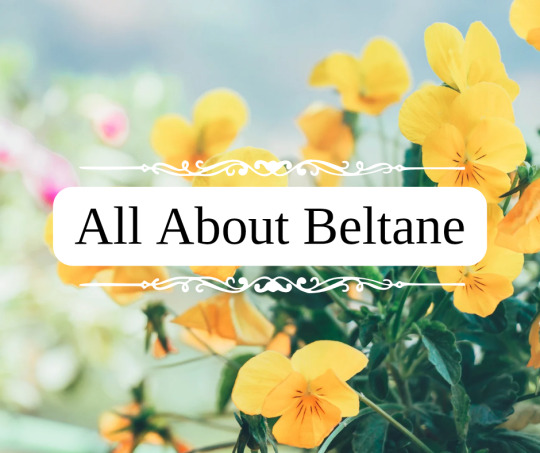
All About Beltane
Beltane, also known as Bealtaine in Irish, is a Gaelic holiday traditionally held on May 1st or the halfway point between the spring equinox and the summer solstice. It is believed to be named after the Celtic sun god Belenus. It was widely observed in Ireland, Scotland, and the Isle Of Man, and is one of the 4 major Celtic fire festivals. It is mentioned in even the earliest Irish literature and marked the beginning of summer and used as the marker to drive cattle into their summer pastures. Although public celebrations have mostly fallen out after the 20th century and many traditions have been mixed with other cultural holidays (such as the Roman holiday May Day), many Celtic Neopagans and Wiccans still celebrate, and many local traditions still continue, causing it to now get a cultural revival.
Traditionally, rituals were held to protect the livestock that moved pastures, along with crops, dairy products, and people, and to encourage growth. It was also important to appease the Aos Sí, or nature spirits/fairies, which were believed to be more active then.
According to early medieval texts in 908, druids would make two bonfires and drive cattle between them to protect them from disease. In the 18th and 19th centuries, bonfires continued to be an important part of the celebrations. Before the bonfires were lit, all hearth fires were put out, and then relit using the fire from the Beltane bonfires after the celebration.
Continuing into the 19th century, cattle were still driven over or between flames, or sometimes around the fires or made to leap over. The people themselves did as well for good luck and protection. Once the fires died down, people would dab themselves with the ashes and sprinkle them over their crops and livestock. Torches from the bonfires would also be brought home and carried around the home or boundaries, and also used to relight the hearth.
Food was also an important part of the Beltane festival, and usually included a feast of lamb, which, historically, was sacrificed. In 1769, it was written that a hot drink, called a caudle, made of eggs, butter, oatmeal, and milk was served, along with tossing a bit on the ground as an offering. A Beltane Bannock, a type of oatmeal cake, was also written to be important and had a few traditions around it.
In one tradition, the Beltane Bannock had nine knobs on it and each person would take the bannock and face the fire, proceeding to break off the knobs of bannock one at a time and tossing them behind their shoulder as an offering to the spirits for protection over their livestock and from predators (one for the cow, one for the sheep, one for the fox, etc). Afterwards, they would drink the caudle.
According to other 18th century writers, there was another Beltane Bannock tradition where the bannock would be cut into slices and one was marked with charcoal. The slices were then thrown into a bonnet and everyone would take one out while blindfolded. According to one writer, whoever pulled the marked bannock slice had to leap through the fire 3 times. According to another, the person would instead be pretend-thrown into the fire and for some time afterward people would talk about the person as if they were dead. This may have always been symbolic, or it may have been a tradition from a time where actual human sacrifice was used. This tradition was also near identical to May Day traditions that occurred in Wales and other parts of Europe, however.
Other traditions including flowers and plants were also observed, especially ones that evoked fire. Documents from the 19th century cite that yellow and white flowers, such as primrose, rowan, hawthorn, gorse, hazel, and marsh marigold was used and placed at doorways and windows. Sometimes they were strewn into garland, and other times they were made into bouquets, made into crosses, or fastened to them. They were also fastened to cows and milking/butter equipment.
Decorating a May Bush or May Bough was also a widespread tradition, and it usually consisted of a small tree or branch (typically hawthorn, rowan, holly, or sycamore) decorated with bright flowers, ribbons, candles, painted shells or egg shells from Easter, and more. In some traditions they also decorated it with gold and silver May Balls, which were hurling balls, that were then either given out to children or gifted to winners of a hurling match. It was also known as the only acceptable time to cut a thorn tree, as they were associated with fairies and may have also been a relic of worshipping tree spirits. It would either be decorated where it grew, or branches hung over windows, doors, roofs, and barns either inside or outside. Traditionally, it was the responsibility of the eldest of the house to decorate it.
The tree was usually left up until May 31st, but in some traditions it would be burned in the festival bonfire after singing and dancing around it. In Dublin and Belfast, May Bushes were brought into town and decorated by the whole neighborhood, with each neighborhood competing for the most beautiful bush. These competitions could also lead to neighborhoods attempting to steal others May Bushes, which eventually led to the May Bush being outlawed in Victorian times.
Appeasing the fairies was also a big part in Beltane celebrations, with many traditions revolving around offerings to the fairies and also warding them off, as there were many fears around them stealing dairy. One protection tradition was to leave 3 black coals under the butter churn. Another was to hang May Boughs on the milk pails. And yet another was to hang cattle tails in the barns. Flowers were also used to decorate the cattle's horns for good luck.
Farmers would also lead a procession around the boundaries of the farm and would "carry with them seeds of grain, implements of husbandry, the first well water, and the herb vervain (or rowan)", stopping at the four cardinal points of direction starting at the east, and performing rituals towards each direction at each stop. These processions were said to bring protection of their farm produce and encourage fertility. Some people also made the sign of the cross using milk on the backside of cattle for good luck.
As for fairy offerings, one tradition was to pour milk or leave food at places associated with the fairies such as "fairy trees". In Ireland, cattle were brought to "fairy forts" where a small amount of their blood was poured into the earth with prayers of the herd's safety. Sometimes, the blood would be left to dry and then be burnt.
Visiting holy wells was also a popular way to celebrate Beltane. Visitors would walk sunwise, moving from east to west, around the well while praying for health. They would then leave offerings of coins or cloth. The first water drawn from the well on Beltane was thought to be especially potent, and would bring good luck to the person who drew it.
Morning dew on Beltane was also thought to bring goodluck and health, and maidens would wash their face with it or roll in it at dawn or before sunrise on Beltane. It was also collected in a jar, left in sunlight, and then filtered. The dew was said to increase sexual attractiveness, maintain youthfulness, protect from sun damage, and ensure skin health during the ensuing year.
Modern day celebrations may vary from these more traditional festival activities, but many choose to incorporate or take inspiration from the traditions at least. Popular traditions still revolve around bonfires, feasts, decorating a May Bush, and focusing on protection and growth.
Beltane Associations
Colors - yellow, white, red, green
Food - lamb, milk and dairy, beef, bannocks, caudle, cakes
Animals - cattle, sheep, other herd animals
Items - primrose, rowan, hawthorn, gorse, hazel, marsh marigold, holly, sycamore, yellow and white flowers, flower garland, greenery, morning dew, dairy products
Crystals - citrine, fire agate, fire opal, carnelian, red and yellow jasper
Other - protection, fertility, good luck, fire, smoke, ash, sun, bonfires, farming
Ways To Celebrate
light a bonfire
jump over or dance around a bonfire
decorate a May Bush or May Bough
craft and hang flower garland
bake Beltane Bannocks
collect morning dew
create some caudle
ward and protect your home or property
leave offerings for the fairies
focus on protection, growth, and luck magic
enjoy time in the sun
have a feast
create a bouquet out of yellow and white flowers
visit a farm or petting zoo
#beltane#beltaine#bealtaine#celtic#gaelic#irish#scottish#pagan#witch#witchy#wicca#may day#magick#magic#magickal#grimoire#tradition#celebrate#bonfire#fire festival#witchcraft#spiritual#witchblr#witch community#paganism#pagan witch#celtic paganism#paganblr#about#dairy
16 notes
·
View notes
Text
Okay.
So, I was researching about Scottish folk practices when I stumbled upon a reddit thread about smudging. Specifically, OP was wondering if they could practice smudging if they grew their own sage. The replies were surprisingly positive and supportive.
Now, my own take on this may be controversial: if you practice anything from a culture not your own with good intentions and a pure desire to learn the old ways as they are taught within that community, rather than a bastardized white-washed version of it, then I think that's good. Admirable in some cases. If certain traditions aren't taught to someone–anyone!–those traditions are certain to die out. And if someone is approaching those traditions in good faith and deep respect for that culture, then why not teach them? And directly from the source so that they may learn better, as opposed to playing telephone with outdated or romanticized books. That's my personal take.
But within that thread, I saw this reply:

And something rubbed me the wrong way about they said "my ancestors used to sain (their term for smoke cleansing)". A few things rubbed me the wrong way, actually.
First, let's clear up what saining means and where it comes from.
The Cailleach's Herbarium talks about saining in an excellent article, link here, that mentions the meaning of the word sain: "The etymology of the word Sain is worth noting. Sain comes from Middle English (whence also English sain) and is found in the Scots language as Sain. Cognate to the Scottish Gaelic word Seun (“a charm”). Sain can mean to bless or consecrate and make the sign of the cross."
They go on to explain that saining can take many forms, such as the traditional smoke cleansing, fire cleansing (as is seen in many Celtic traditions and myths), and water cleansing (or lustration).
Basically, sain is a charm, usually used for protection and cleansing. It is not truly comparable to smudging, a term commonly associated with Native American traditions. And even that term is an English word dating back to the 16th century: "The smudge meaning "make a smoky fire" is by 1860, also of unknown origin, but perhaps related. According to OED now dialectal and North American. OED also gives it in an earlier, obsolete sense of "to cure (herring) by smoking" (1590s).The related noun smudge is attested by 1767 as "a suffocating smoke" (to repel mosquitoes, etc.); from 1806 as "heap of combustibles ignited and emitting dense smoke." Hence smudge-pot (1903). Smudge-stick as a Native American (Crow tribe) artifact is by 1908"
...which doesn't clear anything up about its origins, really. The smoke purification practices of the Native Americans is varied depending on tribe and their individual beliefs, with words that also vary by language and dialect. Basically, smudge is an English catch-all term for smoke purification processes...which is why I have to laugh when people split hairs over the use of the word, assuming it applies to all Native Americans, which, frankly, is also an English catch-all term for the numerous tribes of indigenous peoples in North America.
Some people are perfectly comfortable conflating one term with a whole ass practice and holding that as the be all end all term for said practice, while on the other hand, those same people will take a word for a very specific thing, and use that as a a catch-all term for contemporary practices to the other word. At best, it's confusing as fuck. At worst, it's muddling not one, but TWO similar yet still very different cultural practices.
In fact, I'll take it a step further: if you follow a Native American tradition or spiritual path, try to learn what the specific word is for your smoke purification ritual(s), and start using that word (if you are allowed within your practice) in lieu of the term "smudging". That goes for other practices that take part in smoke purification. Own your culture, own your traditions! Don't dumb down your practice for the sake of outsiders who don't care or fully understand those practices. You deserve better. Your fellow practitioners deserve better. Your culture deserves better. The ancestors who laid the groundwork for these traditions deserve better. Honor yourself, honor them all.
#Scottish witchcraft#Scottish folk magick#Scottish syncretism#Scottish animism#Sain#Saining#Gaelic Polytheism
4 notes
·
View notes
Text
I'm knitting a selkie shawl because I can't find faux fur in seal print.
#witch business#witch community#witchblr#witchcore#witchcraft#selkie#scottish mythology#witchyvibes#knitting
22 notes
·
View notes
Text

Happy Lughnasadh!
#lughnasadh#Scottish cow#Scottish cattle#witchcraft#witch#witch aesthetic#pagan#pagan holidays#lammas#original illustration#illustration#megamoth art#megamoth#fantasy illustration
47 notes
·
View notes